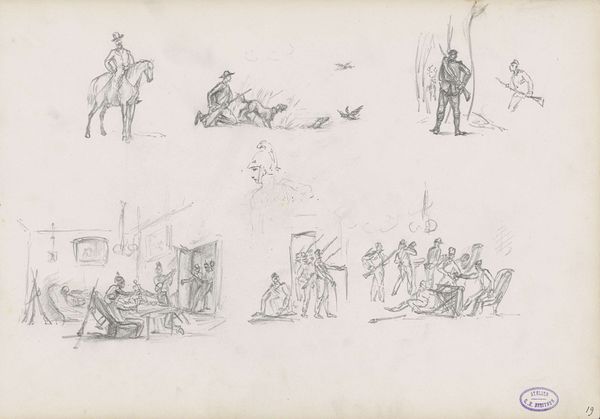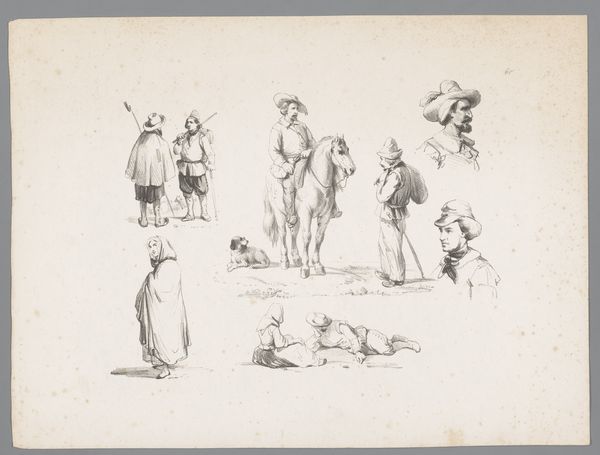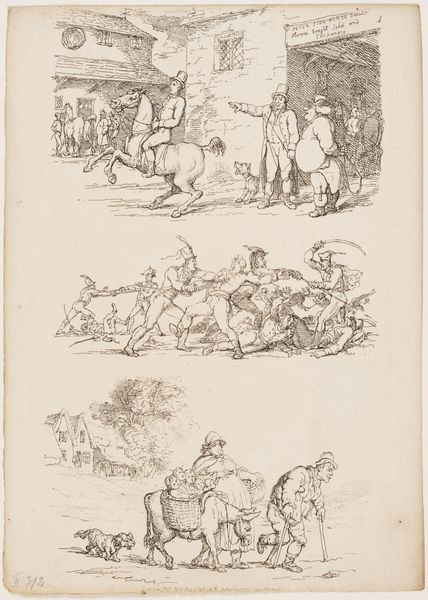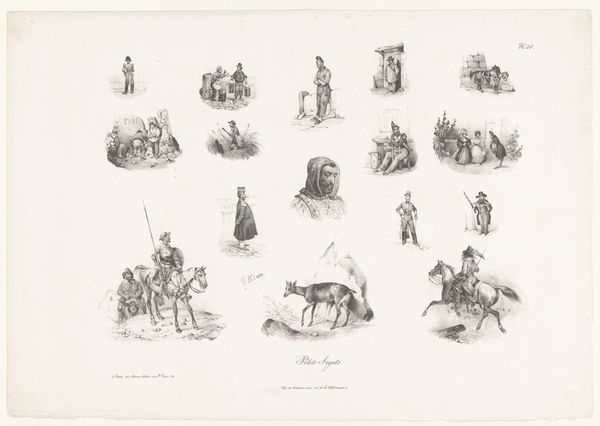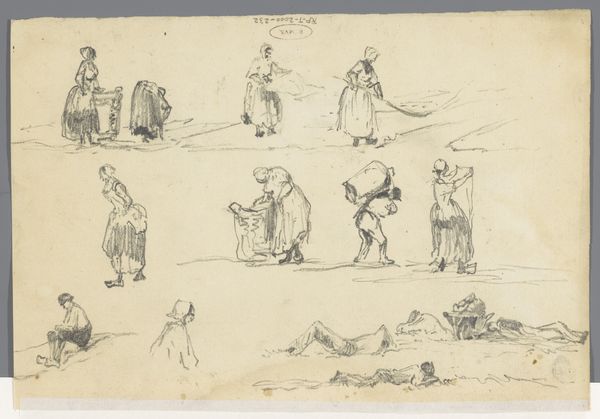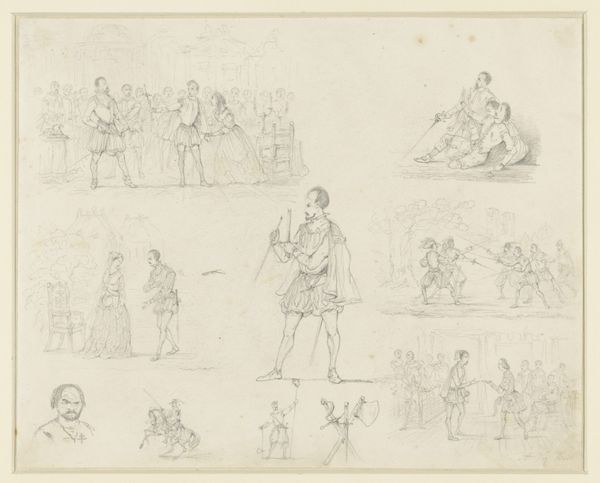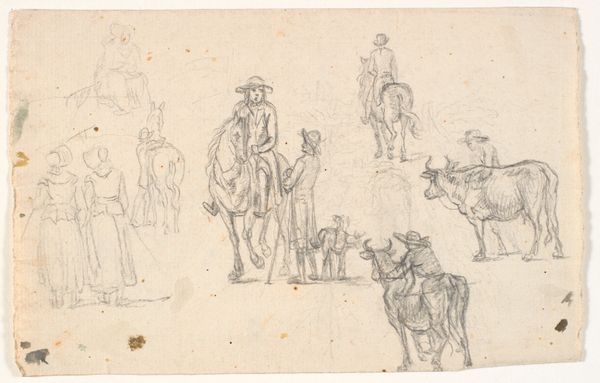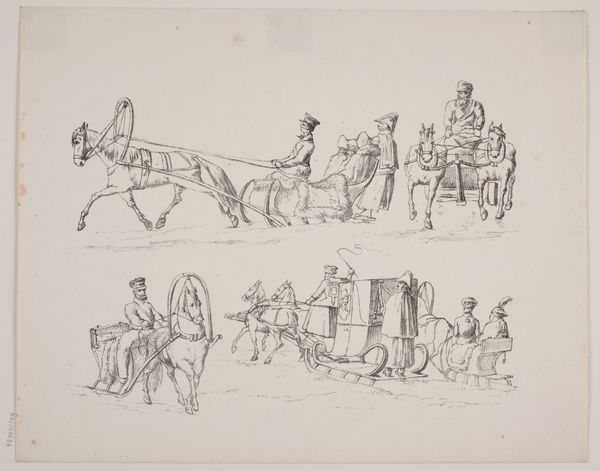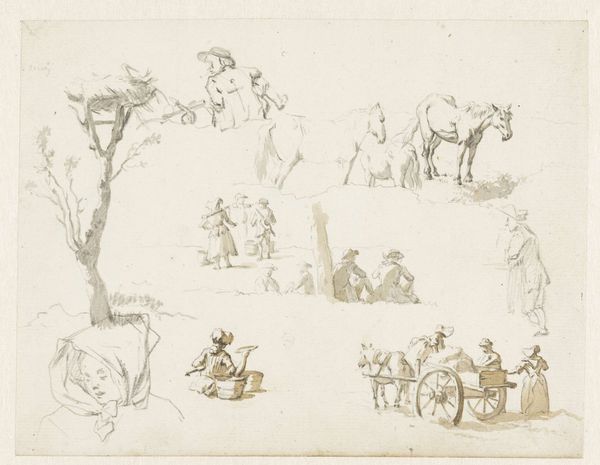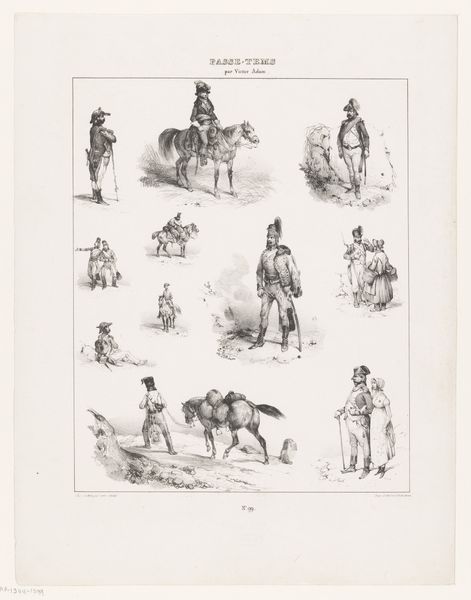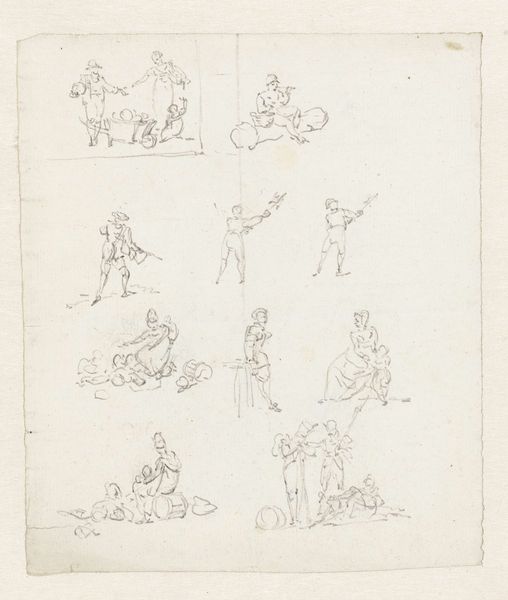
Dimensions: height 278 mm, width 375 mm
Copyright: Rijks Museum: Open Domain
Curator: Let’s discuss this lively sketch, “Soldaat te paard en andere figuurstudies,” created between 1832 and 1902 by Karel Frederik Bombled. It’s currently held at the Rijksmuseum. Editor: Immediately, I’m struck by the energetic quality of this pen-and-ink drawing. It feels very immediate and raw. I notice a whole array of figures sketched rapidly. What exactly are we seeing here? Curator: Indeed! It's essentially a sketchbook page. Look at the diverse figures, seemingly captured mid-motion – soldiers on horseback, a lady in fashionable dress, various other portraits and genre scenes. It suggests an artist deeply interested in observing and documenting the social landscape around them. It can be linked to larger discussions around social identity in 19th century genre paintings. Editor: The ink drawing captures the fleeting movement, but it really highlights the tools of its production. It emphasizes the physical act of the artist, the quick strokes with the pen – the relationship between the body, tool and paper seems central. I wonder if it suggests an awareness of the relationship between industrial modes of production and the social status of artistic labor? Curator: Absolutely, you can read that way too. Looking at Bombled, his life spanned a politically tumultuous period of European history. It raises fascinating questions about how art historical and political narratives intersected in Dutch society. His choice of depicting soldiers is especially relevant given that historical context. Editor: It’s more like a raw exploration of form using the most direct of media. Paper, pen, ink - the elemental act of mark-making reflecting its process. To be clear, I'm not interested in romanticising artistic practice. I'm really trying to point to what is sometimes erased when art is translated and exhibited. Curator: Well, for me the act of observation becomes incredibly potent as we recognize the agency involved in that act – a very clear point-of-view reflected across the composition of studies. What do we take away from that visual statement, then and now? Editor: It's that unmediated quality – the quickness, the rough lines. They create a palpable sense of the artist working, thinking and reacting. I see a reflection on art's modes of creation and transmission through the image, perhaps a critical analysis on what we are consuming as an audience. Curator: Exactly, a powerful testament to artistic insight and social commentary using relatively commonplace medium. Editor: Yes, absolutely. This type of immediacy draws our focus back on what we consider craftsmanship today.
Comments
No comments
Be the first to comment and join the conversation on the ultimate creative platform.
